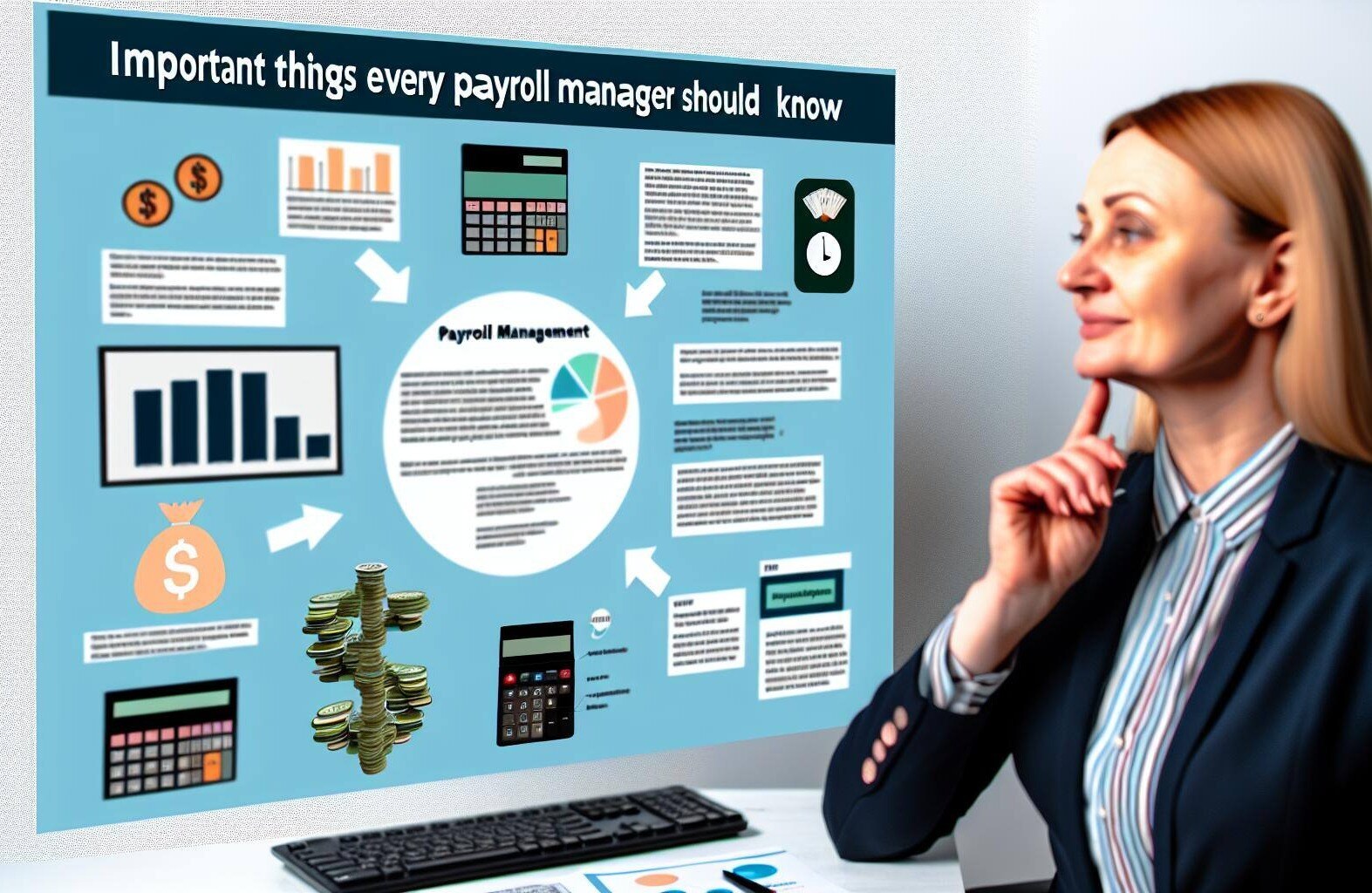2 min read
Cannabis Payroll Processing: What Are the Required Steps?
Processing payroll for cannabis employees can be complex and much more strenuous than processing payroll for the average business. However, there are...

When it comes to operating a business, payroll management stands as a critical function, ensuring employees receive accurate and timely compensation.
Payroll managers play a pivotal role in navigating complex regulatory landscapes, managing sensitive data, upholding compliance standards, and of course, making sure everyone gets paid.
Here is the essential knowledge every payroll manager should possess, offering insights, strategies, and practical tips to streamline processes and overcome challenges effectively. Employers should take the below information into consideration when deciding whether or not it is time to outsource payroll or handle it in-house.
Before anyone can begin to process payroll, they need to understand the basics of payroll, including what it is and why it's important.
Payroll encompasses the process of calculating earned wages using time and attendance data, withholding deductions, and ensuring employees are paid on schedule. It involves a meticulous sequence of steps to avoid errors that can impact both employee satisfaction and organizational compliance.
Effective payroll management is foundational to maintaining employee satisfaction, organizational reputation, and financial stability. It directly influences financial reporting accuracy and compliance with tax laws and regulations.
In addition to understanding the basics of payroll, anyone who is going to process payroll should know the general role and responsibilities of a payroll manager.
Payroll managers are typically responsible for:
A payroll manager oversees the entire payroll process, from collecting employee time data to disbursing payments and filing tax returns. Understanding this cycle is fundamental to ensuring accuracy and timeliness in payroll operations.
Generally, processing payroll includes four core steps:
Below are strategies and tips on how to be an effective payroll manager:
Payroll managers can implement the following strategies for navigating the payroll processing cycle with efficiency and accuracy.
Managers should identify inefficiencies and implement process improvements to optimize payroll operations.
This involves:
Empowering employees with self-service options for accessing pay stubs, updating personal information, and managing benefits can go a long way to not only improve the payroll process but attract and retain employees as well.
The best employee self-service portals come with a payroll mobile app as well, allowing employees to access their information anywhere, anytime, and from any device.
Staying updated with industry trends, regulatory changes, and technological advancements through training and professional development is very important for success as a payroll manager.
Investing in ongoing training for payroll staff and other professional development opportunities is a great strategy, and helps you and your team to stay updated on regulatory changes, technological advancements, and best practices.
A Learning Management System (LMS) can also be a worthwhile investment.
Networking and engaging with industry peers and attending conferences to exchange knowledge and stay informed about emerging trends in payroll management is also a great idea.
Payroll managers must stay abreast of federal, state, and local labor laws, tax regulations, and reporting requirements. Non-compliance can lead to penalties and legal repercussions for the organization.
People in charge of payroll should be aware of the following areas of compliance, and ensure they understand the rules regarding each area:
While having proficiency in these areas is required in order to effectively do your job as a payroll manager, it is also important as the rest of the company will likely rely on you to know the ins and outs of these subjects.
Managers should consider a labor law poster service to help them keep up with changing and evolving regulations, while also maintaining posting requirements with ease.
Knowledge of labor laws is essential to ensure fair compensation practices and avoid wage and hour violations.
Some basic labor laws that every payroll professional should know well include:
Accurate payroll tax withholding and reporting are critical to compliance with IRS regulations and avoiding penalties.
There are three primary responsibilities regarding payroll taxes for payroll managers:
Maintaining accurate records and generating comprehensive reports is essential for audits, budgeting, and decision-making processes within the organization.
Generally, there are two halves to recordkeeping and reporting:
Payroll managers are often responsible for preparing for audits. This involves maintaining meticulous records and implementing internal controls.
Three easy steps you can take to help manage payroll audits include:
Protecting sensitive employee information from unauthorized access and cyber threats is paramount in payroll management. With payroll fraud and fake direct deposit attempts being a common occurrence in today's digital age, threats are everywhere.
Aside from using modern HR software to keep data secure, here are three things to keep in mind when handling sensitive employee data:
Unfortunately for payroll managers, just understanding their role and responsibilities is not enough to be a true effective payroll manager.
Processing payroll is not easy, that's why your role is so vital to your company. You need to not only know what is required of you, but what tools and resources are available to make your job easier and more efficient.
Here are just a few reasons why effective and accurate payroll processing is important:
Here are some tips and tools that are recommended if you want to be an effective payroll manager:
Utilizing advanced payroll software streamlines processes and reduces common payroll errors, just one of the many benefits of cloud payroll solutions. An integration with Human Resources (HR) Software and timekeeping systems can further enhance efficiency and data accuracy.
Additionally, using payroll software helps bring some modern functionality to your organization inherently with things such as paperless payroll.
While there are several things to consider when choosing the right payroll and HR software, there are some basic steps to getting your business set up with modern payroll:
Smaller businesses may want to learn more about what is a PEO, and whether or not a PEO or payroll service company is right for them.
There are common payroll errors and mistakes that all payroll managers make. Understanding how to best avoid them and addressing payroll discrepancies promptly and transparently is crucial to maintaining trust and credibility among employees.
There are three key areas to managing and avoiding payroll errors:
Handling payroll discrepancies is one of the toughest parts of being a payroll manager. Proactively resolving discrepancies through effective communication with employees and verification of data sources is crucial to maintaining good employee relationships.
Here are three basic steps you can take:
The best payroll managers stay ahead of technology trends when it comes to payroll. As we mentioned earlier, older and outgrown processes can be twice as likely to cause errors.
Three big payroll technology trends include:
Automated payroll systems streamline repetitive tasks, reduce errors, and improve efficiency.
Some basic features of payroll software include:
Cloud technology offers scalability, accessibility, and data security benefits for payroll operations. No matter the size of your company, there is a solution out there for you.
Cloud-based payroll solutions often offer:
Seamless integration with HR and timekeeping platforms facilitates data sharing and enhances overall organizational efficiency.
Benefits of a unified platform include:
Mastering the complexities of payroll management requires a multifaceted approach encompassing technical proficiency, regulatory knowledge, and strategic insight.
By leveraging advanced technologies, maintaining compliance with evolving laws, and fostering a culture of continuous improvement, payroll managers can optimize processes, enhance organizational efficiency, and contribute to overall business success.
To learn more about our payroll software, or how we are already helping countless businesses with their payroll processing, contact us today. You can also watch our payroll software demo video recording to get a real look at how our solution works, and the features within.
Or, download our free whitepaper below to get some great tips on reducing payroll errors.

2 min read
Processing payroll for cannabis employees can be complex and much more strenuous than processing payroll for the average business. However, there are...

3 min read
We all make mistakes. However, when it comes to processing payroll even small errors run the risk of legal consequences and can cause damage to your...

3 min read
When it comes to managing your business’s HR and payroll needs, it’s essential to understand the different options available. Two popular choices are...